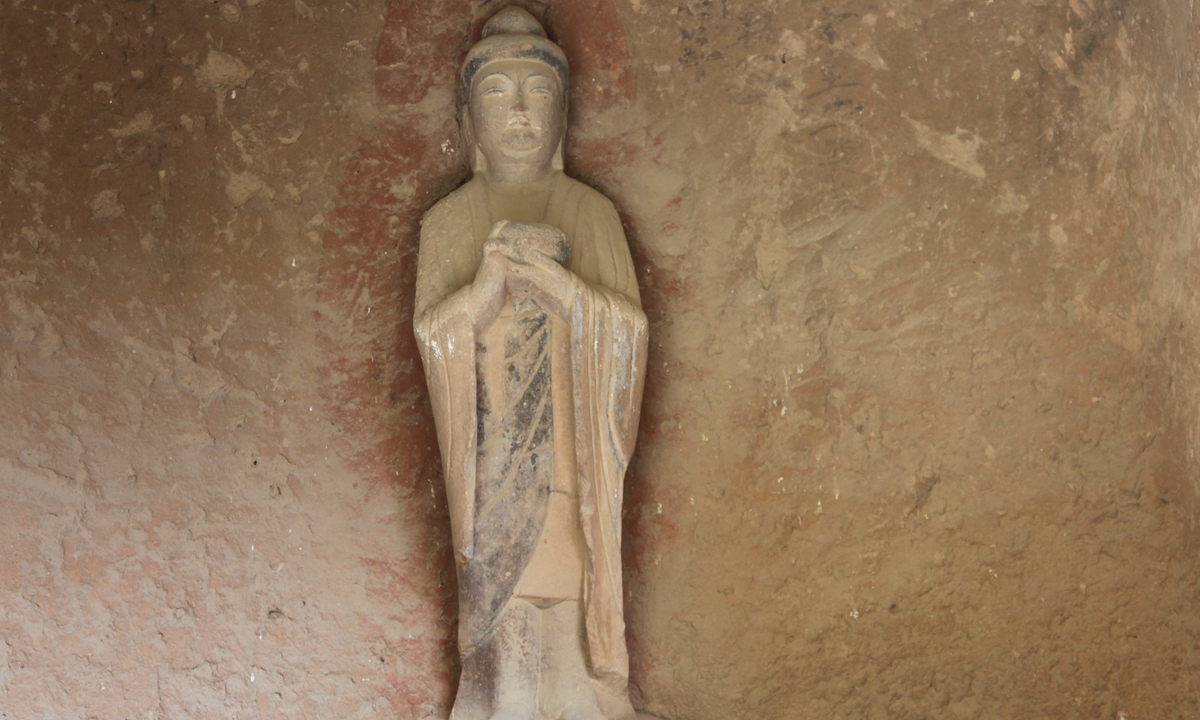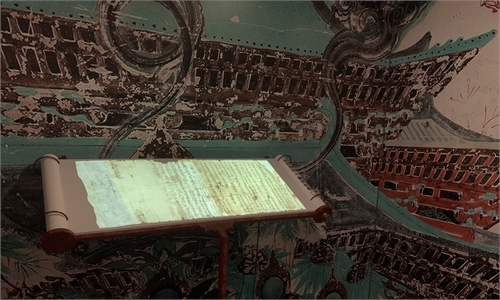Major earthquake in Gansu threatens 1,600-yr-old temple grottoes; Dunhuang Mogao Caves remain safe

A statue of the Bingling Temple Grottoes, one of China's first batch of cultural relic sites in Northwest China's Gansu Province Photo:IC
Following the 6.2-magnitude earthquake that hit Jishishan county in the Linxia Hui Autonomous Prefecture, Northwest China's Gansu Province, on Monday, the Bingling Temple Grottoes, part of China's first batch of cultural relic sites and located near the disaster's epicenter, saw several stones get knocked loose and fall to the ground.While no casualties were reported at the grottoes so far, the earthquake has "indeed" caused a "safety hazard" at the Bingling Temple site, the Cultural and Tourism Bureau of Linxia revealed on Tuesday.
Witnesses have seen stones rolling down at the site. Yet, whether or not these stones were once parts of the grotto's sculptures is still unknown.
Xu Yitao, an archaeologist in Beijing specializing in ancient architecture, told the Global Times that if those stones were indeed part of the grottoes' statues, then they most likely came from the main body of the statues, which means major damage has been done.
"A large earthquake could have destroyed the mountain that supports the statues," Xu emphasized.
Diao Changyu, vice president of the Institute of Cultural Heritage in Zhejiang University and expert in the protection of cave relics, told the Global Times that cultural relics in grottoes are usually inside the cave. However, some of the stones scattered around the Bingling Temple grottoes were seen outside the cave, so whether the cultural relics themselves have been damaged needs to be further investigated.
He also emphasized that considering the vulnerability of grottoes to earthquakes, they are more "easily damaged, thus requiring a larger budget and more technical support."
With a history that dates back to 1,600 years ago, Bingling Temple has 216 grottoes, more than 800 Buddhist statues and 56 pagodas.
According to the site's WeChat account, the temple is currently closed to the public and it is unknown when it will reopen.
With the possible damage done at the temple grottoes, the public quickly turned their attention to another national-level cultural heritage site: the Mogao Caves in Dunhuang, which is a 13-hour drive from Bingling Temple.
"It is relatively far from Dunhuang, and so far no damage has been caused by the earthquake," a customer service staff of the Mogao Caves told media.
On Tuesday afternoon, the site's online booking channel was still open for public reservations.
At present, earthquake prevention at the Mogao Caves uses a model to predict which areas are most vulnerable to earthquakes, so workers can take protective measures in a timely manner.
Meanwhile, many museums have installed smart anti-seismic equipment to ensure that cultural relics remain stable during an earthquake, according to Diao.
"I don't think the Mogao Caves are in danger of damage from an earthquake," Xu noted.
While the Mogao Caves remains safe, the Jishishan Museum, which is located at the epicenter of the disaster, was impacted by the earthquake.
"The earthquake has had an impact on the museum. We are now sorting out the condition of the second- and third-tier relics in our museum," a museum staff told media.
At present, the museum has a collection of 1,740 cultural relics, including treasures such as jade and pottery pieces as well as ancient coins.




